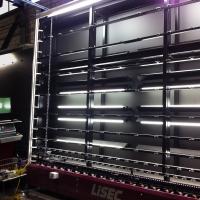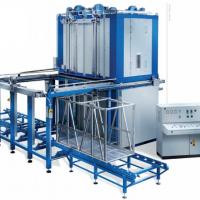Author: Flavio Martinho | Glaston
Source: www.glastory.net
UNIT’ASSEMBLER – the assembly, gas-fill and press robot – is one of the most advanced components of Glaston IG lines. It is available in single- and tandem-versions.
The possibilities are almost limitless. This machine automatically assembles, presses and gas-fills insulating glass units using all common spacer types, including rigid spacers, flexible spacers or Thermo Plastic Spacer TPS®. It handles rectangular or shaped units and double, triple or even quadruple units, with or without steps.
In IG unit assembly, perfect alignment is key. Our solution uses a lifting beam at the lower edge and a fixed front stop to guarantee the highest production quality.
The real productivity booster is the synchronous gas-filling option. Thanks to a bending bar system on both sides of the glass and an additional filling unit, triple units are filled in the same time as double units.
A calibrated gas sensor continuously checks the filling level to ensure full control of gas quantity in every unit. In the tandem version, two separate pressing plates operate synchronously – allowing even extra-long units to be assembled in a single press cycle.
In case of glass breakage, the roller transport system allows fast and easy cleaning – a major advantage over competitor systems that rely on belts.
In short – With one-step pressing, calibrated gas control and optional tandem configuration, UNIT’ASSEMBLER combines high-precision assembly, synchronized gas filling and maximum flexibility.
























